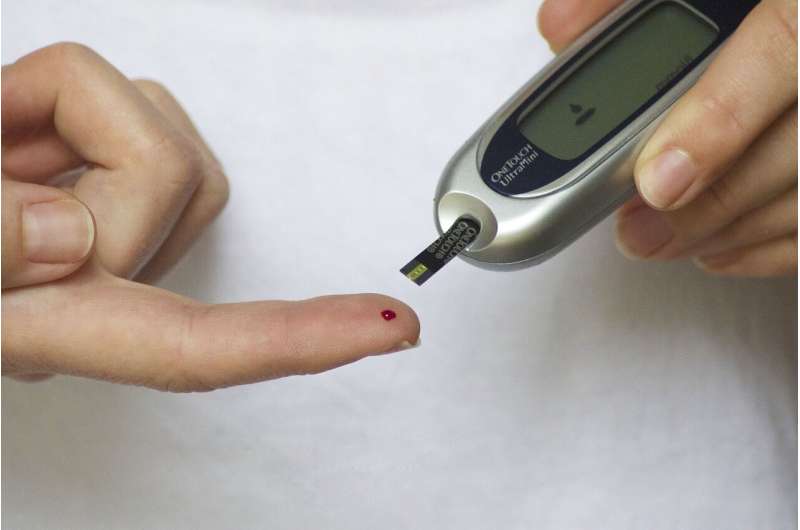Home » Health News »
Trial results show two medications most effective in lowering blood glucose levels in type 2 diabetes patients

Two medications have proven to be most effective in keeping blood glucose levels within a target range while managing type 2 diabetes, a disease that affects more than 32 million Americans. Out of four medications commonly used in conjunction with metformin, liraglutide and insulin were superior to glimepiride and sitagliptin in keeping A1C (a measurement of average blood glucose) levels less than 7%, according to the GRADE study.
Approximately 1,250 patients out of 5,000 with type 2 diabetes were randomly assigned to each of the four medications in conjunction with ongoing metformin therapy. The comparison included two oral medications, the sulfonylurea glimepiride and the DPP-4 inhibitor sitagliptin, and two injectable medications, insulin glargine and the GLP-1 receptor agonist liraglutide. The effects of each of the four medications on diabetes complications and side effects were also examined. While results showed liraglutide and insulin were the most (and similarly) effective in keeping A1C levels less than 7%, glimepiride had a smaller effect and sitagliptin showed the lowest effect, resulting in the highest frequency of developing A1C levels persistently greater than 7%. Insulin glargine was most effective in keeping A1C levels less than 7.5%, a secondary outcome of the study.
Presented at the virtual 81st Scientific Sessions of the American Diabetes Association (ADA), the head-to-head comparison provided an informative guide for providers and their patients on how to assess individualized treatment strategies when managing type 2 diabetes. Sue Kirkman, MD, UNC-site principal investigator for the GRADE study said that once metformin is no longer keeping blood sugars levels in the target range, the results help decide which secondary medication may be most beneficial.
“Injected liraglutide and once-daily “basal” insulin controlled A1C/average blood sugar for significantly longer than glimepiride or sitagliptin, with sitagliptin coming in last in the results. The differences were particularly striking when the baseline A1C was higher. This suggests that for controlling blood sugars, especially if control is not good on metformin, the two injected agents will likely work better,” said Dr. Kirkman, who was also co-chair of the Outcomes Adjudication Committee for the GRADE study.
Additional findings include:
- Weight loss: On average, participants treated with liraglutide and sitagliptin had more weight loss than those treated with glimepiride, while the participants assigned to insulin glargine had stable weight over time.
- Side effects and risk: Liraglutide had more gastrointestinal side effects, such as nausea, abdominal pain, and diarrhea, than the other three medications.
- Glimepiride was associated with a higher risk for severely low blood glucose than the other medications, although this was rare.
- Complication benefits: Based on preliminary results, liraglutide had a relative benefit compared with the three other medications for reduction of a composite outcome of heart attacks, stroke, and other heart and vascular complications. However, Kirkman stressed that these results may change, as not all cardiovascular outcomes have been adjudicated yet. No differences were seen among the four medications in measures of kidney disease or nerve damage.
To include a highly diverse population, the GRADE study enrolled patients with a wide range of age, race, and ethnicity. Since minority and ethnic groups are disproportionately impacted by diabetes, 20% Black and 18% Hispanic/Latino Americans were a part of the study. The UNC Diabetes Care Center played a significant role in the trial by being one of only a handful of sites that enrolled people whose primary language was Spanish, in addition to those whose primary language was English. Sponsored by the National Institutes of Health, GRADE followed participants for an average of five years and a maximum of more than seven years.
“This study started in 2013 and ended in April of 2021. This means that the last 15 months of the study occurred during the COVID-19 pandemic. It’s impressive the way the study teams and participants were able to pivot quickly with the disruptions of the pandemic,” said Dr. Kirkman.
Source: Read Full Article


